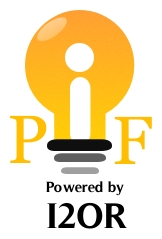STUDY OF YOUTH PROBLEMS IN WEST KUTAI REGENCY
Abstract
The aim of the research is to examine the problems faced by the Government in the context of empowering youth in the dimensions of social, national, and state life in West Kutai Regency.
The research was conducted from August to October 2021 in West Kutai Regency. East Kalimantan Province.
This study uses legal research methods, namely by conducting Normative Juridical and Empirical Juridical legal research. The stages of research activities are: (1) identification of the problems faced in youth development in West Kutai Regency; (2) inventory of legal materials needed related to Youth, systemization and analysis of legal materials; (3) observation and data collection; (4) data analysis; and (5) reporting.
The results of the study show that (1) the problems or obstacles faced by the Government of West Kutai Regency in the context of empowering youth in the dimensions of social, national and state life in West Kutai Regency include: (a) there are no facilities and infrastructure such as youth arenas in West Kutai Regency ; (b) Lack of youth activities in West Kutai Regency; (c) youth organizations/youth communities and the like, have never reported their activities to the West Kutai Regency Government cq the West Kutai Regency Youth and Sports Office, this has become one of the reasons for the lack of communication to jointly develop West Kutai Regency through youth activities; and (d) lack of information related to youth activities in West Kutai Regency; and (2) the efforts made by the Government of West Kutai Regency in the field of youth development, namely by carrying out youth awareness, empowerment and development activities.
Downloads
References
[2] BagirManan. 1999. Thoughts of the Indonesian Constitutional State, Paper at the National Scientific Meeting of the Faculty of Law, University of Padjadjaran, Bandung, 6 April 1999..
[3] SjachranBasah. 1985. Existence and Benchmarks of Administrative Courts in Indonesia, Alumni, Bandung.
[4] DindinSupratman. 2018. The Prevalence Of Youth And National Security Narcotics And Threats Lost Generation, JurnalLitbangSukowati I. Volume 1 Number 2 Year 2018, page. 121.
[5] Taufik Abdullah. 2018. Youth And Social Change, LP3S Jakarta.
[6] Article 1 paragraph (2) Law Number 40 of 2009 concerning Youth (State Gazette of the Republic of Indonesia of 2009 Number 148, Supplement to the State Gazette of the Republic of Indonesia Number 5238).
[7] Ministry of Youth and Sports, Ministry of Youth and Sports Strategic Plan 2016-2019, Ministry of Youth and Sports, 2017. Hlm. 8-10
[8] Marzuki, P.M. 2008.Legal Research, Kencana, Jakarta,
[9] Sudirman,I., M.Aminawar; A.S.Alam; , I.K.Sakharina;M.Darwis; M.E. Kurniawan. 2018. Study of Youth Development Policy Strategies in North Luwu Regency. BangdaSimpurusiang Journal 1 (1): 61 – 79
LEGISLATION
The 1945 Constitution of the Republic of Indonesia.
Law Number 40 of 2009 concerning Youth (State Gazette of the Republic of Indonesia of 2009 Number 148, Supplement to the State Gazette of the Republic of Indonesia Number 5238).
Regulation of the Minister of Youth and Sports of the Republic of Indonesia Number 0059 of 2013 concerning Youth Leadership Development.
Regulation of the Minister of Youth and Sports of the Republic of Indonesia Number 0945 of 2015 concerning the Functions and Duties of Executing Youth Entrepreneurial Capital Institutions.
Copyright (c) 2022 Fatimah Asyari, Amin Slamet, Maisyarah

This work is licensed under a Creative Commons Attribution-NonCommercial-NoDerivatives 4.0 International License.
Author(s) and co-author(s) jointly and severally represent and warrant that the Article is original with the author(s) and does not infringe any copyright or violate any other right of any third parties, and that the Article has not been published elsewhere. Author(s) agree to the terms that the GPH Journal will have the full right to remove the published article on any misconduct found in the published article.





























